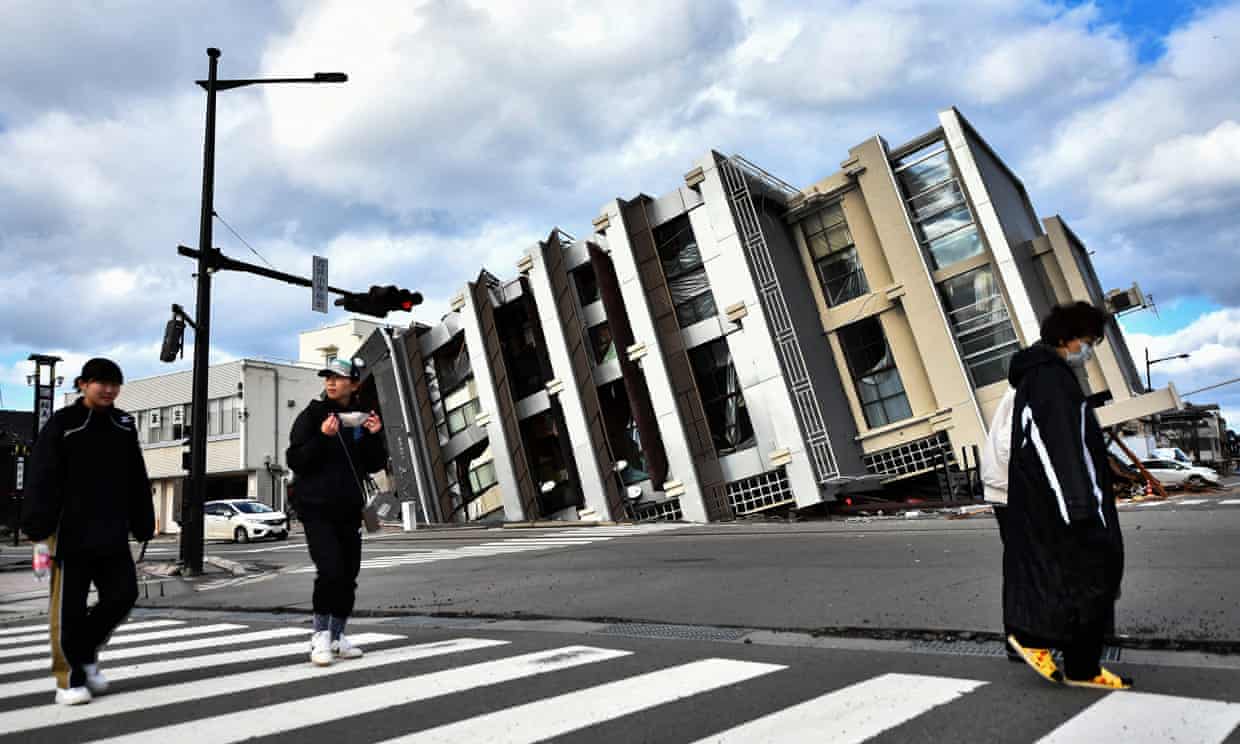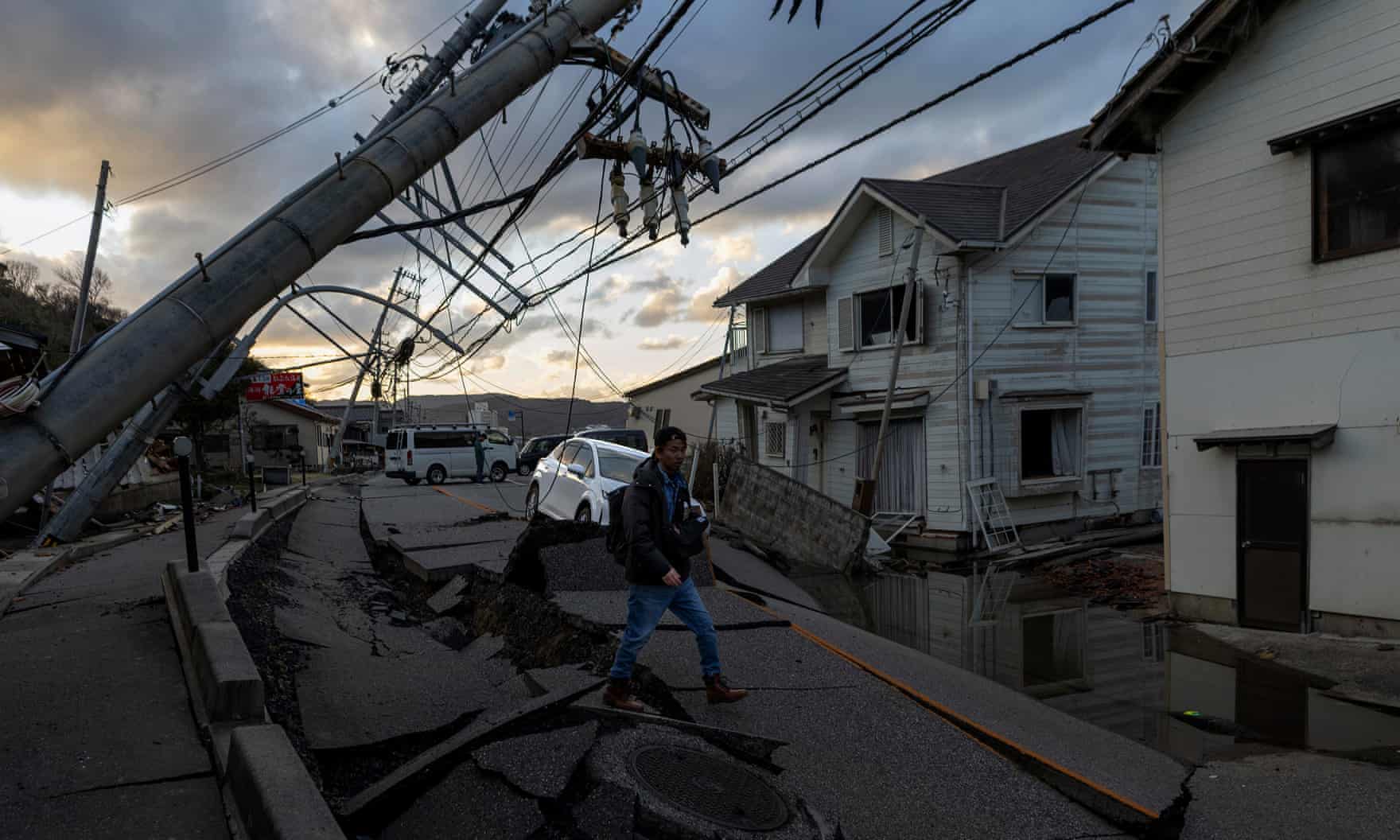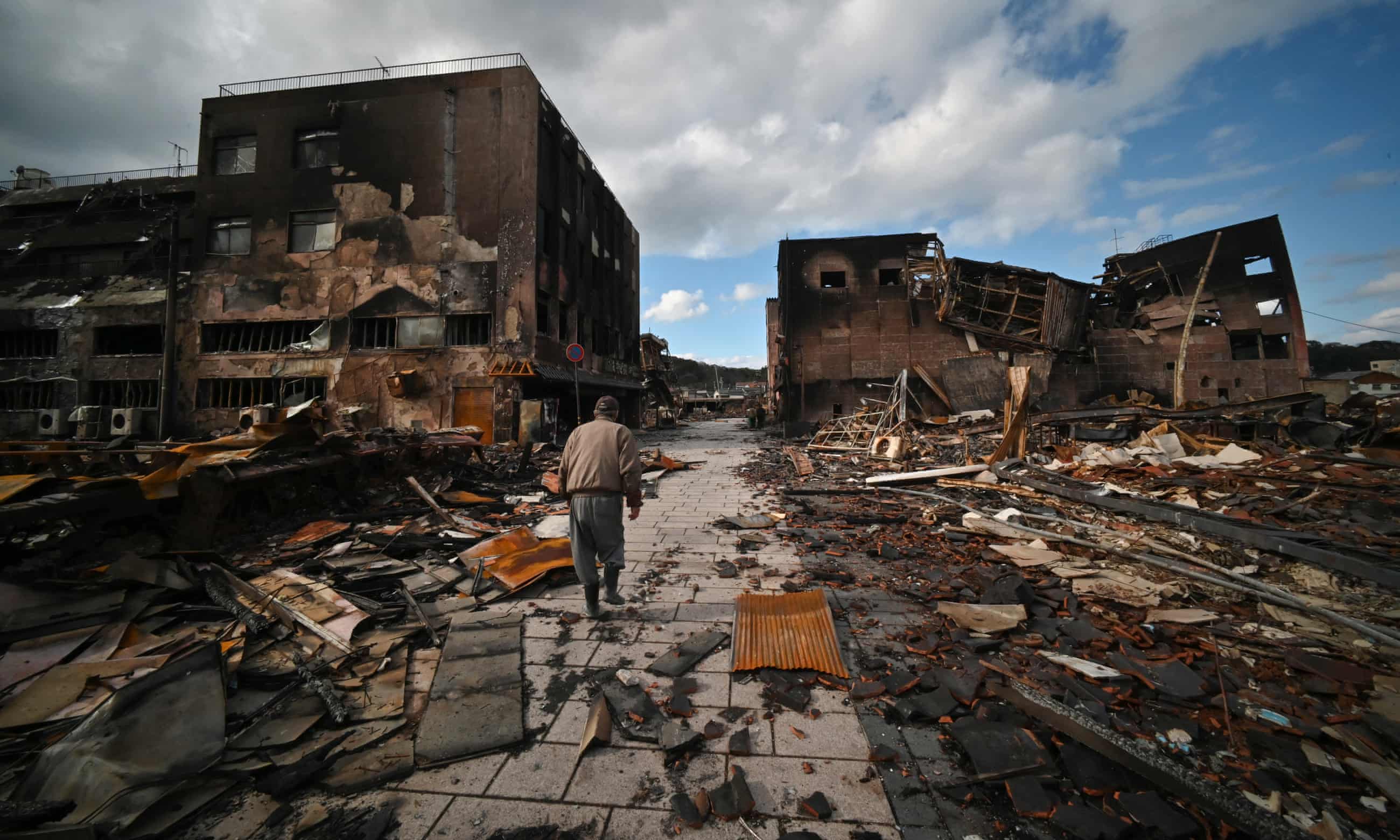Older people living in isolated places and outdated homes face enormous danger when disaster strikes
There was an unfamiliar feel to the scenes that greeted residents and rescue workers in central Japan after sunrise on Tuesday. The previous afternoon, a 7.6 magnitude earthquake had jolted the region with violent shaking that went on for more than a minute, but must have felt like a lifetime to families relaxing in front of the TV on New Year’s Day.
Their screens, which had been airing variety shows to usher in the Year of the Dragon, quickly switched to TV announcers wearing hard hats, their voices filled with urgency as they implored people to head for higher ground as far away from the coast as possible. For the first time in almost 13 years, Japan was bracing for the arrival of a potentially deadly tsunami.
The waves did arrive, but they carried none of the destructive power of those that laid waste to Japan’s north-east coast on 11 March 2011, when more than 18,000 people perished, most of them by drowning.

In towns and villages on the remote Noto peninsula, cars were perched on roads scarred by deep fissures, multi-storey buildings rested awkwardly on their sides, and roof tiles carpeted collapsed homes. The destruction came not from a towering tsunami, but from a series of strong quakes, the first of which caused shaking that reached the highest level of seven on Japan’s seismic intensity scale.
This week’s disaster, in which 92 people have died and more than 460 have been injured – while 242 are still missing – was a reminder of Japan’s vulnerability to merciless seismic activity, and of the inadequate levels of disaster readiness in at-risk communities across the archipelago.
Skyscrapers with shock absorbers and pendulums
Japan has a deserved reputation for its earthquake-resistant construction technology. Located on the Pacific “ring of fire”, the country is the most seismically active in the world, experiencing about 1,500 noticeable quakes a year.
Buildings constructed after 1981 are designed to withstand even powerful earthquakes. Finding oneself stuck on the upper floor of a swaying Tokyo skyscraper during a powerful quake can be deeply unsettling. But there is an expectation that the structure will remain upright, thanks to innovations including massive soft rubber cushions installed beneath the foundations, shock absorbers on each floor and, in some cases, enormous pendulums at the top to counteract the movement of the building.
But on Tuesday, the aftermath of the Noto disaster told a very different story. While coast guards checked the sea for people who may have been swept out by tsunami waves of up to 1.2 metres in height, rescue workers continued to retrieve bodies – and a small number of survivors – from the rubble.

The victims had died in a way Japan had not witnessed on this scale since April 2016, when a magnitude 7.0 quake killed 273 people in the Kumamoto region in the south-west. Japanese of a certain age will also recall the January 1995 quake that sparked blazes that swept through neighbourhoods in Kobe, a port city in western Japan, killing 6,000 people. In Noto, large numbers of people died a way that shocked many in “earthquake-resilient” Japan.
In terms of their ability to withstand powerful quakes, Monday’s disaster highlighted the yawning gap between isolated, depopulated communities such as Wajima and Suzu, where 78 people had been reported dead as of Friday, and cities such as Tokyo, 450km (280 miles) away.
Isolated and ageing
Those differences are as much social as technological, according to Tsuyoshi Takada, professor emeritus at Tokyo University and president of the Japan Association for Earthquake Engineering.
“Many of the houses are more than 50 years old and are not maintained properly,” Takada said. “And the region is experiencing depopulation, like every rural area in Japan, with young people in particular leaving.”
In ageing communities, evacuations from quake zones and approaching tsunami can take longer, often with tragic consequences. More than 56% of the victims of the 2011 triple disaster were aged 65 and over; in Noto, a large number of the dead and missing are older residents.
Many lived in homes that do not meet stringent design codes as they were built before 1981. Houses built before that year bore the brunt of the 1995 disaster in Kobe, leading to an overhaul in building codes requiring the seismic retrofitting of certain structures, including all public schools.
“The Noto earthquake’s intensity was strong enough to destroy houses and buildings, including many old timber houses vulnerable to strong shaking,” said Yoshiaki Nakano, director-general of the Earthquake Disaster Mitigation Research Division at the National Research Institute for Earth Science and Disaster Resilience near Tokyo.
“Also, a series of earthquakes in the area in the past three years may have already damaged those buildings, which may have accelerated and increased the damage [caused on Monday].”
Older residents are less likely to invest in reinforcing their ageing houses in their twilight years, according to Takuya Nishimura, a professor in the Disaster Prevention Research Institute at Kyoto University.
“It may be possible to add pillars to increase the strength of the house,” he said, adding that the heavy kawara clay roof tiles that appeared to “squash” homes in Wajima and Suzu could be replaced with lighter materials. “But it’s difficult for residents to carry out these reinforcements because of the cost,” he said.
Seismologists believe there is a 70% chance of a massive earthquake hitting the Tokyo metropolitan area within the next 30 years, killing up to 23,000 people and causing direct damage reaching ¥47tn (£254bn).

If that happens, it would be followed by an unflinching national sense of mission to quickly return Japan’s political and commercial centre to something approaching normality.
But in rural, half-forgotten communities such as those on the Noto peninsula, the physical and economic scars will remain long after the rubble is removed. That was evident in Wajima this week among the smouldering remains of the 1,000-year-old Asaichi morning market, a centre of community life that was mounting a tourist-driven recovery after three years of pandemic restrictions.
Kohei Kirimoto, whose family have run a traditional lacquerware business in the market for more than 200 years, chatted with friends amid the destruction as he put out food in the hope of attracting his missing cats.
“Our minds are blank right now,” he said. “But we need to burn this image into our memories … and then eventually start the recovery process. That’s all we can do.”
